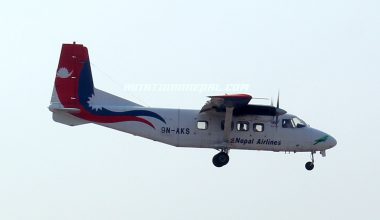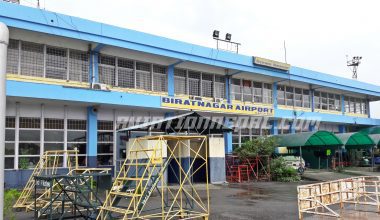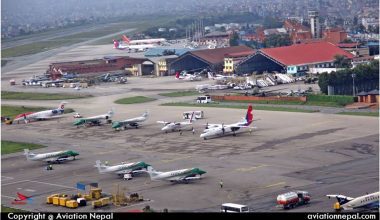Nepal Airlines Airbus A320 ‘9N-AKX’ Lumbini suffered a bird strike while landing at Tribhuvan International Airport (TIA) on Saturday. The flight ‘RA-206’ was en-route to Kathmandu from Delhi Indira Gandhi International Airport carrying 135 passengers which made landing at around 12:12 pm local time at Tribhuvan International Airport.
The bird strike damaged the nose radome of the Airbus A320. A radome of an aircraft is a structural, weatherproof enclosure that protects a radar antenna. Radome protects the antenna from weather and conceal antenna electronic equipment from view. They also protect nearby personnel from being accidentally struck by quickly rotating antennas.
The incident occurred after landing so there was no any serious repercussion.
The engineering team from Nepal Airlines Corporation (NAC) conducted essential inspection procedures and is currently working on to replace the radome. The aircraft will come into operation after the successful accomplishment of the maintenance protocol.
On July 7, 2016 ‘9N-AKX’ suffered a major bird strike while taking off from TIA to Hong Kong with 59 passengers on board. Likewise, the same aircraft again encountered bird strike when it was en-route to Kathmandu from New Delhi on 6th March, 2017. The leading edge of the right wing and slat suffered a minor damage in this incident.
The country’s sole international airport, Tribhuvan International Airport operated by the Civil Aviation Authority of Nepal (CAAN) has long been facing wildlife hazards whereas Bird Hit problem have posed a serious threat to air safety of Nepal.
Mostly, every day the airport has seen many birds in its vicinity that produced huge losses due to their presence in the takeoff and landing area.
The frequent bird strike incidents have proved safety of TIA to be vulnerable. So, the governing authority must find and implement effective solutions to mitigate wildlife hazard at TIA premises and enhance the safety.








